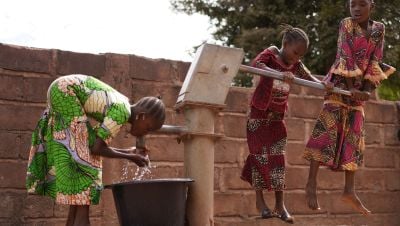Horizontal inequalities are inequalities between groups with different identities, like blacks and whites, women and men, Muslims and Hindus, or Hutus and Tutsis, among many examples. Such inequalities are unjust and resented. When severe, horizontal inequalities can cause violent conflict.
These inequalities are often extremely persistent. Blacks in the United States have been poorer than whites since they first arrived as slaves; despite emancipation, they remain less well educated, poorer, and discriminated against in multiple ways. Similarly, the Romany people have been deprived throughout Europe for centuries. There are many persistent horizontal inequalities in developing countries, which are often linked to geography. For example, northern groups in Nigeria or Ghana; Somalis in Kenya; Hutus in Rwanda and Burundi; or Muslims in India. Today the long-term impoverishment and persecution of the Rohingya people in Myanmar is in the news.
Yet some groups do manage to overcome their disadvantages. Chinese and Filipino immigrants to the United States started much less well off than the majority, but now have above average education. The same upward mobility has been shown by Bangladeshi immigrants to the United Kingdom. Catholics in Ireland were for centuries worse off than Protestants in every respect, but they too have caught up in education and incomes.
What accounts for these differences in the dynamics of horizontal inequalities?
First, we must acknowledge that there are very strong forces holding back deprived groups. Being poorer, they have less money to invest in assets and in the education of their children, and have weaker access to loans as well. As social networks tend to be concentrated within groups, people from poorer groups have less useful contacts for access to good schools or jobs.
There is also considerable societal discrimination, both formal and informal. Formal restrictions on people because of their identity was critically important in determining access to education, assets, and work, for example, in Apartheid South Africa. While formal restrictions are increasingly outlawed in many countries, much informal discrimination remains. People with names or appearance that suggest they are from a particular group often find it more difficult to get access to housing or jobs, for example. Where groups face political inequalities – because they are in a minority or because they lack voting rights as non-citizens – it makes it more difficult to secure changes in government policy to counter their disadvantage: indeed, government policy may deliberately discriminate against them. In many cases, these forces trap people from deprived groups in permanent deprivation. The big question is whether and how this situation can be changed.
Government policy can do a lot. Governments can provide special opportunities for members of deprived groups – school scholarships, quotas in education and employment, assistance with loans and housing, for example. Measures like these have been adopted in Brazil and the US for the black population, in Malaysia for the Malays, in Mexico for indigenous peoples and in New Zealand for the Maoris. But for the most part, while these policies have helped a bit, they have not reversed or eliminated the horizontal inequalities.
Another approach is to use universal policies that reach everyone, but by design help poorer groups most. For example, regional policy can be directed towards giving special assistance to poorer regions and groups. Effective universal social services and cash transfers help those who were previously without access. Policies like these have been adopted in Brazil, Peru and Bolivia; they have helped reduce the gaps in health and education, but they have not succeeded in reducing horizontal inequalities in economic opportunities or outcomes. It seems that comprehensive policies are needed to have a significant effect, including both direct and indirect, or universal, policies.
Malaysia adopted a systematic and comprehensive approach to reduce the inequalities between Malays and the Chinese beginning in the 1970s. Policies were directed towards education, employment, and assets and have greatly reduced the gap between the two groups, although some groups (including immigrants from the Philippines) – not covered by the policies – remain deprived. A comprehensive strategy was also adopted in Northern Ireland in response to the violence that erupted from the 1970s, also encompassing education, employment and housing. Horizontal inequalities have been largely eliminated. South Africa followed an inclusive approach, with a special focus on education and asset ownership. However, while inequalities between blacks and whites have fallen, they remain significant.
A comprehensive approach requires political leadership. In the cases just mentioned, there were special reasons why governments adopted a comprehensive strategy. In Malaysia and post-apartheid South Africa, the deprived group also formed the demographic majority and enjoyed political power. In Northern Ireland, the urgent need to attack the root causes of the violence was recognised, and action was taken by the UK government and the European Union, both accountable to wider constituencies beyond the province itself. But in many other countries the political situation is less favourable; the deprived are in a minority, and quite often non-citizens. The privileged majority may take only limited corrective action – or may even use its position to continue or worsen the inequalities.
There is an urgent need to correct such persistent horizontal inequalities, apart from their sheer injustice, not least because they are often an underlying cause of civil conflict. And the problem is growing as flows of migrants become a new source of horizontal inequality: 66 million people were forcibly displaced in 2016, almost double the number in 1997. Many of these displaced people live on the edge of society without rights in the countries to– or from - which they fled. The resulting resentments undermine social cohesion and threaten societal stability.
The Sustainable Development Goals (SDGs) recognize the need to tackle inequalities among groups as well as individuals. This needs to be translated into action. Yet the powerful levers of the IMF and World Bank are not used to this end; they do not, as yet, recognize, monitor or act on such inequalities.
The HDialogue blog is a platform for debate and discussion. Posts reflect the views of respective authors in their individual capacities and not the views of UNDP/HDRO.
HDRO encourages reflections on the HDialogue contributions. The office posts comments that support a constructive dialogue on policy options for advancing human development and are formulated respectful of other, potentially differing views. The office reserves the right to contain contributions that appear divisive.
Photo: © UNDP India. Enabling equitable access to justice for all and making people aware of their legal rights is key to ending societal discrimination and to reducing discrimination.


